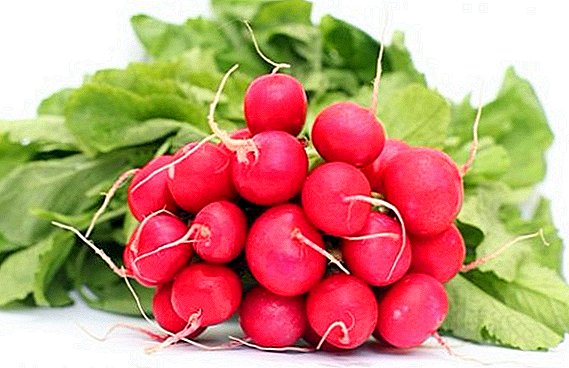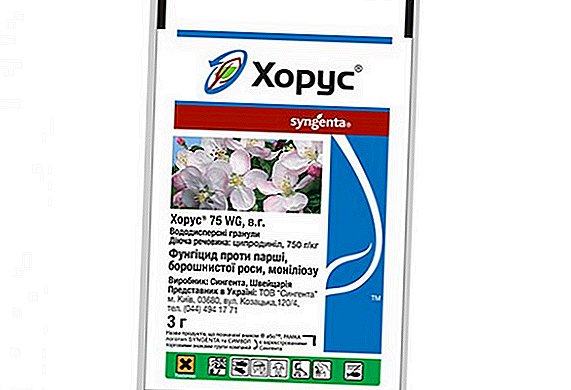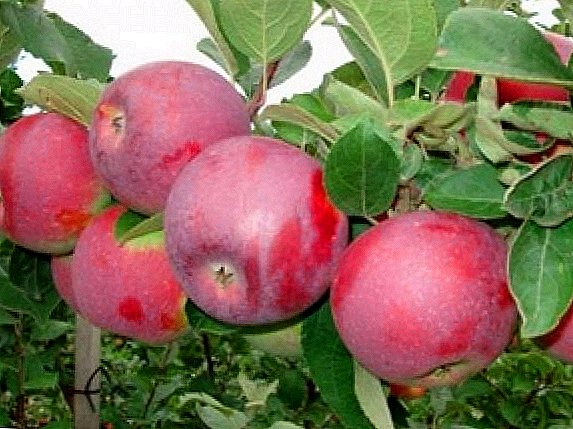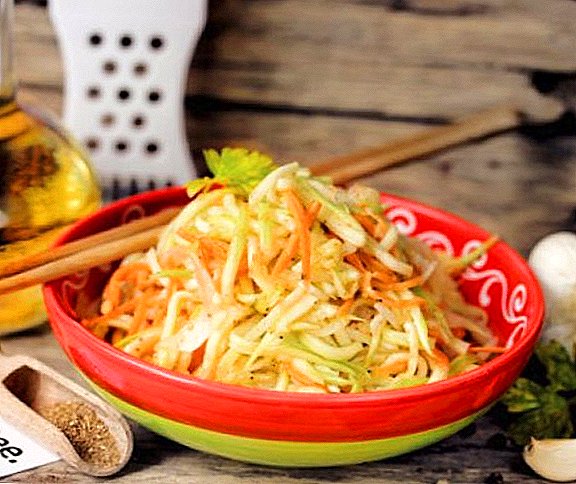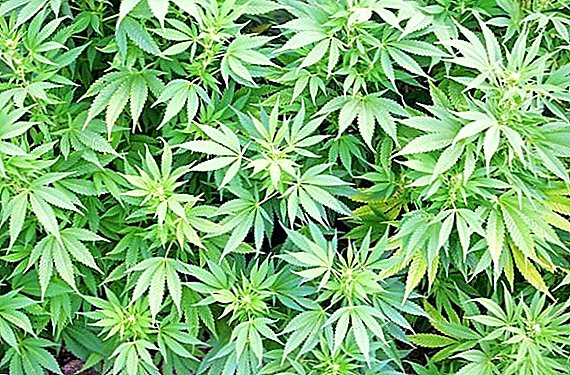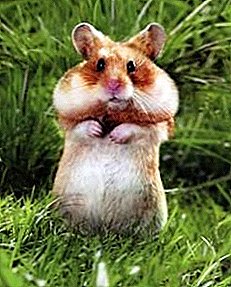
Poultry cuticle is a disease of the stomach when the mucous membrane becomes covered with ulcers and subsequently dies. Untreated leads to the death of the bird, with timely treatment it is quickly and completely cured.
Cuticle is a common disease of young poultry. The disease is caused by malnutrition, when the body lacks vital vitamins.
Peptic ulcer disease can be cured in its early stages. If the disease is not treated or start treatment late, the bird dies.
With proper care and nutrition, the bird is not subject to cuticle. Only a veterinarian can diagnose an ulcerative lesion after an internal examination of the dead bird's stomach. This is necessary because the symptoms of the disease are similar to the chicken plague - you need to make sure that the bird does not have the infectious plague, but the cuticle.
What is cuticle in a bird?
 Cuticle - a disease that affects the bird's stomach. Its inner surface, the cuticle, becomes covered with ulcers and begins to decompose. If you do not start treatment, purulent processes occur in the ulcers. As a result, the inner layer is covered with purulent ulcers, exfoliates and dies. The bird dies from sepsis - the general intoxication of the body.
Cuticle - a disease that affects the bird's stomach. Its inner surface, the cuticle, becomes covered with ulcers and begins to decompose. If you do not start treatment, purulent processes occur in the ulcers. As a result, the inner layer is covered with purulent ulcers, exfoliates and dies. The bird dies from sepsis - the general intoxication of the body.
Ulcers are caused by malnutrition and are not contagious.
Only a veterinarian can recognize a cuticle; an accurate diagnosis is made only after examining the inner surface. Such a study must be carried out to ensure that there is no chicken plague, which quickly spreads among the birds and causes their massive death.
If the chick died from a peptic ulcer, then his stomach is brown inside, covered with boils, exfoliated.
In time, the recognized cuticle is successfully treated.
Who is affected?
 Peptic ulcer disease prone to wild and poultry.
Peptic ulcer disease prone to wild and poultry.
Can get sick any and all poultry: chickens, geese, pheasants, parrots, etc., but the disease is most common among domestic ducks.
The mortality rate of the disease in poultry is 50%.
In the group of highest risk is young animals from birth to one month. The disease can begin at a later age - up to 6 months - mainly in young animals. There are cuticulitis in adult birds, but extremely rarely.
Causes
 The cause of cuticle disease in poultry - poor diet.
The cause of cuticle disease in poultry - poor diet.
When there is not enough plant food in the feed, which contains B vitamins, and there are not enough feed supplements containing sources of vitamins D, A and E, acute avitaminosis occurs. As a result of the lack of the above vitamins, the mucous membrane is damaged.
One of the important components of poultry food - provitamin for the muscular stomach - an anti-inflammatory factor. It is contained in the nutritious plant components of the poultry diet: cabbage, nettle, clover, etc. The greatest amount of provitamin - an anti-inflammatory factor - is contained in rutabwa.
Avitaminosis can occur in the embryonic development phase if the layer feed is not sufficiently balanced. Then, in the first month of life, the lack of vitamins, obtained in the process of embryonic development, manifests itself in the form of a cuticle, even if the nutrition of the chicks is sufficient.
Cuticle can be cured at an early stage, even if it is caused by congenital avitaminosis. If you provide complete nutrition for poultry and additional vitamin supplements for layers, then the poultry will not get sick with an ulcer. Particular attention should be paid to feeding the young under the age of 1 month - after this age, ulcerative lesions of the stomach in birds rarely occur.
Diagnostics
 An exact diagnosis of "cuticle" can only veterinarian after examining the inside of the dead bird's stomach.
An exact diagnosis of "cuticle" can only veterinarian after examining the inside of the dead bird's stomach.
The preliminary diagnosis is made by the following clinical signs:
- the bird is lethargic, sedentary, weak;
- feathers do not adhere to the body tightly, but are disheveled and have an untidy appearance, dull color, do not shine;
- reduced appetite;
- diarrhea - frequent dark litter, liquid, with chunks of undigested food;
- when the bird dies, it all twitches, the neck is especially tense.
The owner of the bird must constantly monitor the young. The disease is not contagious, but since the diet of all birds is the same, the disease can occur in other birds.
If the young grow poorly and do not gain weight, sluggish, the clinical symptoms of cuticle manifest, the death of birds has begun - you need to quickly take measures to treat sick birds and prevent ulcers in the whole house. According to statistics, about half of all birds can die.
Need to consult a veterinarian and begin treatment of young. It is important to exclude the presence of infectious diseases and poisoning.
The veterinarian diagnoses peptic ulcer after opening the stomach of a dead bird. There are no other exact ways to make a diagnosis.
Preliminary diagnosis of the disease accurately puts a veterinarian on the secondary signs of the disease, and after studying the diet of poultry. One of the characteristic signs of the cuticle is diarrhea of a dark color, liquid, interspersed with undigested pieces of food.
Treatment
 It is necessary to treat an ulcer in the early stages of the first 1-3 days, until the ulcers on the inner surface are not festered, and the cuticle does not begin to detach from the muscle wall.
It is necessary to treat an ulcer in the early stages of the first 1-3 days, until the ulcers on the inner surface are not festered, and the cuticle does not begin to detach from the muscle wall.
After the extensive purulent abscess and the dying off of the inner wall begin, it will not be possible to save the bird.
Cuticle treatment consists of two important areas.:
- It is necessary to provide sick chicks with a rich diet that will ensure the intake of the missing vitamins and minerals.
- It is necessary to conduct a local treatment of ulcers inside the stomach to prevent purulent abscess.
Nutrition
Food for birds suffering from ulcerative lesions of the gastric mucosa should be rich in vitamins.
 The necessary vitamins of groups A and B are contained in plant foods. The most useful product in the treatment and prevention of cuticle is rutabaga.
The necessary vitamins of groups A and B are contained in plant foods. The most useful product in the treatment and prevention of cuticle is rutabaga.
In the diet of sick birds, it should be from 1/10 to 1/5 of the total feed. 1/10 of the ration should be filled with alfalfa flour. Also sources of vitamins are carrots, nettle, clover and fresh young greens.
Vegetables and grass give the bird raw, chopped. You can give the bird hay flour from the above plants - a special vitaminized supplement.
To replenish vitamins E and D, it is recommended to give a sick hemp seed to a sick bird. You can purchase special vitamin complexes for poultry, which contain vitamins A, D, E, B in therapeutic doses.
Medicines
For the treatment of ulcers that affect the mucous membrane with cuticle, you need to feed the bird with medication solutions. If necessary, it will be necessary to unsolder, forcing the bird to drink medicinal solutions several times a day every day.
They feed the sick bird in the same way as the chicks - they bend their heads to the bowl and immerse the beak in the solution - the bird reflexively takes sips. It is necessary that the bird drank a few sips.
There are different types of solutions that you need to drink a bird with a cuticle. You do not need to feed the bird at the same time with several solutions - you can choose one or two and alternate them. Exact recommendations for the preparation of the desired solution will give a veterinarian.

- Potassium permanganate solution (manganese). The solution should be very pale - barely pink. Dark pink solution can not be used - it will burn the mucous membrane.
The solution can be kept in a drinking bowl in a sick bird constantly - instead of water. Giving the bird a pale pink solution of potassium permanganate can be unlimited until the young growth is cured.
- Furazolidone solution - make a weak solution (1: 1000) and feed them the bird for 7-10 days.
- Ferrous sulfate solution. Diluted in water at the rate of 1: 500. Birds need to feed for at least a week.
Prevention
The only prevention of ulcerative lesions of the stomach - good nutrition of poultry. Particular attention should be paid to the ration of laying hens and young stock less than a month. After 1 month, the risk of damage to the mucous membrane of the ulcers is reduced to 50%.
In addition to the usual food, it is necessary to ensure the presence in the poultry diet of foods that prevent the occurrence of beriberi. Raw shredded vegetables (turnips, carrots). Fresh forage grass (clover, alfalfa, nettle). You can give the bird hay flour from these herbs. Hemp seed. Preparations containing vitamins A, D, E and B.
 Some owners of poultry houses recommend the use of antibiotics in the diet of birds, which suppress the occurrence of internal inflammatory processes.
Some owners of poultry houses recommend the use of antibiotics in the diet of birds, which suppress the occurrence of internal inflammatory processes.
In the household, antibiotics such as "Biomitsin" and "Tarramycin" are used. There is a complex preparation vitamins / antibiotics "Biovit". Antibiotics are added to food in tiny proportions: 10 mg of the drug per kg of food. Before you enter into the diet of antibiotics, you should consult with a veterinarian.
Gravel. Gravel is necessary in the diet, since in the stomach it promotes grinding and digestion of solid food. It is not affected by gastric juice and normalizes the work of the bird's stomach.
If there is no gravel in the diet, the work of the stomach deteriorates and the absorption of nutrients and vitamins decreases, which can cause vitamin deficiency and the appearance of cuticulitis. The sand that some hosts give to poultry instead of gravel causes irritation of the intestines of the bird.
Eggshell. Well-washed, boiled and crushed eggshells are a source of well-absorbed natural calcium and phosphorus for birds.
Cuticle in poultry is a non-contagious disease - the mucous inner membrane is covered with ulcers, inflamed and dies.
With the timely treatment of gastric ulcer in poultry successfully and quickly treated. Without treatment, the disease itself cannot be cured, since the cuticle affects the ulcers and exfoliates the inner part of the stomach, the cuticle. As a result of purulent abscess, the bird dies.
There is a peptic ulcer in all poultry: chickens, geese, parrots, pheasants, but most often in ducks. The most susceptible to cuticle is chicks under the age of 1 month. There is an ulcerative lesion in young animals up to 6 months. In an adult bird, an ulcer is very rare.
Cuticle can be identified by the common painful type of bird and frequent liquid dark droppings with chunks of undigested food. Only a veterinarian makes an accurate diagnosis after a post-mortem examination of the sick bird's stomach. In birds killed by ulceration of the mucous membrane, the inner surface of the stomach is brown, covered with ulcers, exfoliates.
 Wyandot house chickens, in addition to good wear, have many different colors. By this they attract private poultry farmers.
Wyandot house chickens, in addition to good wear, have many different colors. By this they attract private poultry farmers.Gout in chickens is one of the most unpleasant diseases. Know the enemy in the face! Read more ...
For the treatment of cuticle apply internally solutions that promote the healing of ulcers that occur on the inner wall of the stomach. The diet of poultry is enriched with food, which provides the intake of vitamins.
For the prevention of gastric ulcer in poultry, you need to balance the diet of pets, especially layers and young animals up to 1 month.


